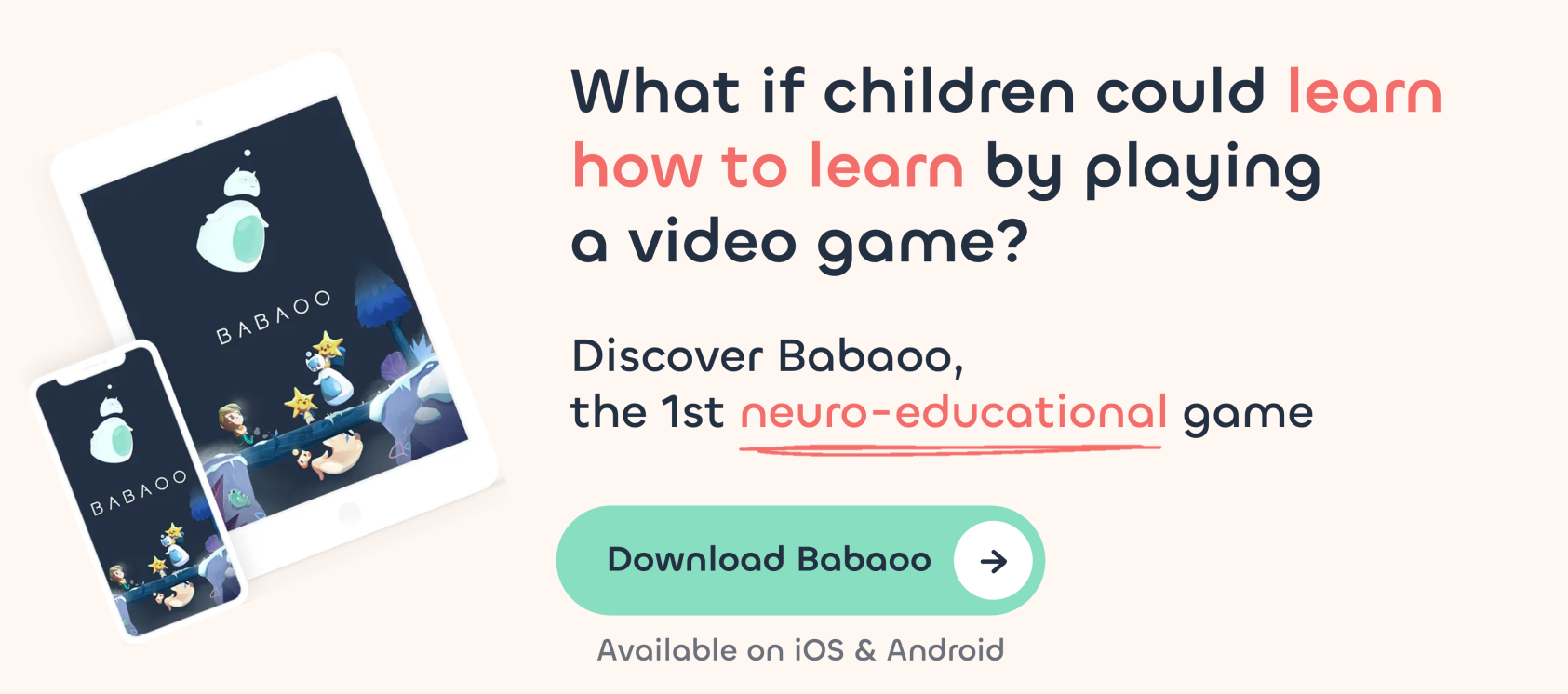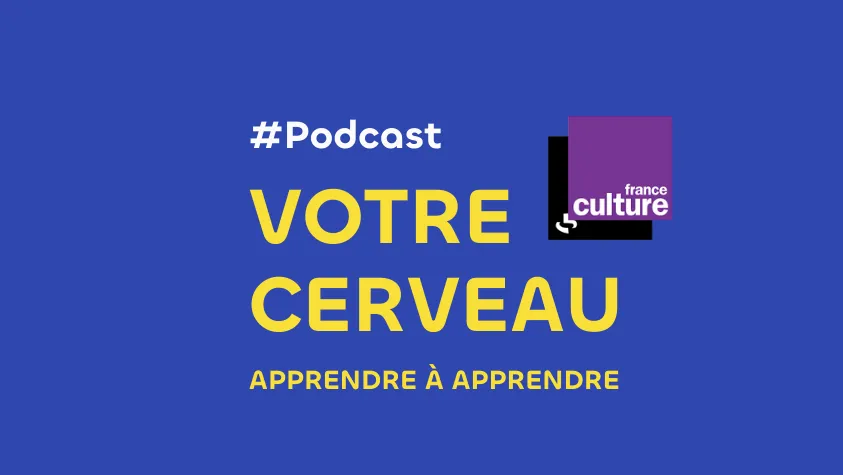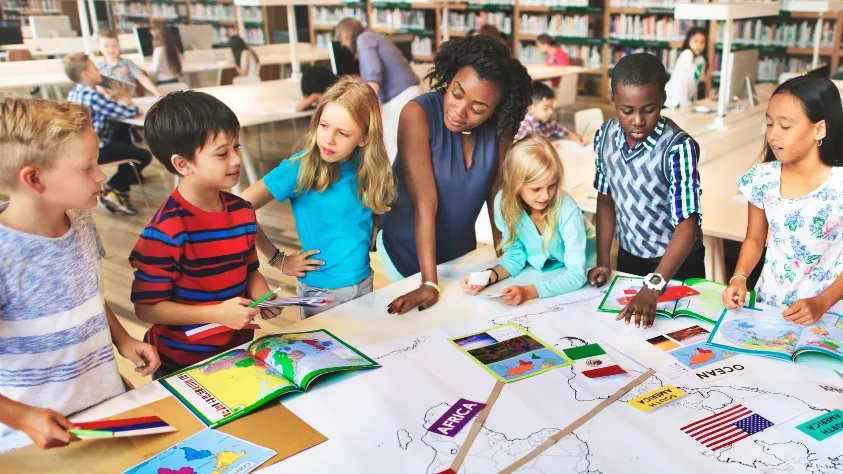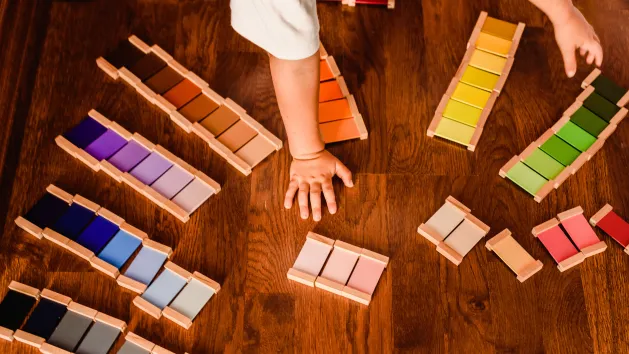
Learning how to learn: the contribution of neuroeducation
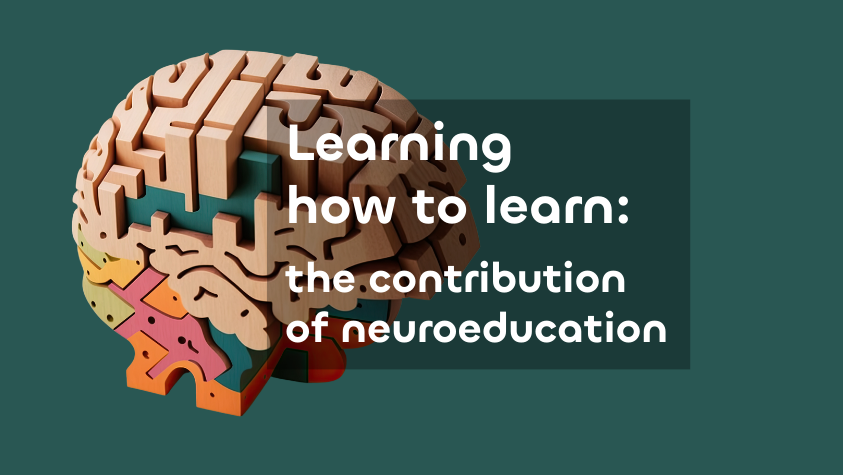
As parents, we’ve all dreamed of being endowed with a superpower enabling us to understand how our children learn, adapt and evolve. Like a perfectly calibrated compass in the sometimes confusing world of education. Wouldn’t that be magical (and, above all, very practical 😅 )?
But rather than magic, it’s science – or rather neuroeducation – we’re talking about here!
If the term sounds complex, rest assured, its essence is simple: better understanding our children’s brains to optimize every learning moment.
Neuroeducation, what is it?
Why don’t we start with a definition? Neuroeducation is the fruit of a beautiful encounter: that of neuroscience, which probes the mysteries of the brain, and the sciences of education. It’s as if passionate neuroscientists and educationalists had decided to get together over a coffee to combine their expertise and rethink learning. ☕ 🧠
Neuroeducation aims to decipher the brain workings involved in the acquisition of new skills and knowledge. It looks at the optimal conditions for stimulating learning, identifies the obstacles that can hinder it and proposes methods to counteract them.
Centered on the learner, neuroeducation is a genuine invitation to look at learning in a new light. It sees it not only as an academic journey, but also as a personal quest to understand the brain.
Neuroeducation is therefore not just about transmitting, it’s about learning… to learn! 🚀
The magic of cerebral plasticity in children 🧠
Cerebral plasticity: definition
The cornerstone of neuroeducation, cerebral plasticity is the brain’s ability to constantly reorganize and remodel itself.
Imagine your child’s brain as a dense, lush jungle, initially difficult to traverse. The paths of learning are at first blurred and ill-defined. But with each new experience, a pathway emerges, each lesson clears it further, and each interaction brings unexplored paths to light. Over time, thanks to training and the accumulation of experience, certain paths become clear and well-defined.
This process of brain adaptation and structuring gradually transforms a complex labyrinth into a network of easily navigable paths, making learning increasingly natural and easy. Fascinating, isn’t it? 🌿
During childhood, brain plasticity is at its peak
Every new experience, every lesson learned, every smile shared shapes new neuronal connections. It’s in these early years that the sponge-like brain is best able to absorb the world around it. This period of great receptivity enables a multitude of information and skills to be acquired at a remarkable speed.
Neuroeducation and brain plasticity during childhood
It’s during childhood, when brain plasticity is at its peak, that neuroeducation comes into its own. By harnessing the power of this cerebral adaptability, neuroeducation-based methods maximize children’s learning potential, making every experience more rewarding. 💡
✏ Note: Brain plasticity works both ways. If a child is repeatedly exposed to negative or stressful experiences, this can also have lasting impacts on the structure and functioning of their brain… Hence the importance of a caring and stimulating environment for harmonious development.
Understanding each other for better learning
Learning to learn… Where to start? 🤔
Learning is first and foremost about understanding our own functioning: identifying what seems easy or complicated, developing strategies to progress, recognizing our concentration needs, and deciphering the subtleties of our attention. In a word, this is what we call Metacognition!
What is Metacognition?
Metacognition is our ability, when faced with a task to accomplish or a problem to solve, to step back and analyze the situation, and pay attention to what’s going on in our heads and bodies. This is where our “little inner voice” comes in, that internal dialogue that guides our thinking: “Remember how you’ve already solved a similar problem“, or “Focus and break down the problem step by step“. Thanks to it, we automatically call on our feelings, our past experiences, our knowledge… to develop a strategy that will enable us to achieve our goal. 🎯
Metacogitation from an early age
This introspective exercise of “reflecting on the way we think” is not just for adults. It’s also an essential building block in our children’s development, preparing them to navigate an ever-changing world and tackle life’s challenges, whether cognitive, academic, social or emotional.
✏ Note: In addition to helping children understand their own functioning in order to develop their skills and gain autonomy, Metacognition will also have a very positive impact on their sense of competence and self-confidence. Rather than thinking “I don’t know how to do it”, the child will think “I don’t know YET how to do it”.
This perspective, theorized by Carol Dweck, American Psychologist and Professor of Psychology at Stanford University, “the power of yet” transforms challenges into opportunities. It fits in with the notion of the “growth mindset”, recognizing that our abilities and intelligence can develop with effort and time, unlike the “fixed mindset” which sees our qualities as immutable.
By adopting a growth mindset, the child understands that the brain evolves and that nothing is fixed forever. This approach not only encourages him to relativize and persevere in the face of difficulties, but also strengthens his resilience and desire to learn. By believing in the ability to evolve and progress, every effort becomes a step towards developing one’s skills, transforming every experience, easy or arduous, into an opportunity for growth.
Taking uniqueness into account, that’s the key! 🗝️
Neuroeducation reminds us that every child is different, has his or her own rhythm and way of assimilating. This is where the need for a tailor-made educational approach and a flexible pedagogy adapted to these singularities emerges.
Different learning styles
Just as tastes and colors vary from person to person, the ways in which children learn can also differ and evolve. It’s important to recognize that these methods are not fixed labels, but can vary depending on the task, evolve with age, or develop with new learning strategies.
Learning is not limited to rigid styles such as Visual, Auditory or Kinesthetic. In fact, an effective approach integrates and balances these different aspects. A child may be more receptive to certain visual or auditory information at one moment, while benefiting from kinesthetic learning at another. Flexibility is therefore essential to adapt to the changing needs of the learner.
The challenge is to help the child understand how information is received (for example, by listening) and how it can be processed or expressed in different ways (by writing or experimenting). Encouraging a fluid transition from one modality to another enriches the learning experience, making the child more adaptable and able to assimilate in a complete and integrated way.
It is therefore beneficial to vary teaching methods to stimulate a wide range of learning abilities, fostering a more global and versatile development.
Inter- and intra-individual variability
Neuroeducation highlights how crucial it is to take into account the variations inherent in each individual. Not only between different children, illustrating inter-individual variability, but also within the same little learner, depending on circumstances. This is what we call intra-individual variability.
For example, some days Maxime may prefer to do his homework in the living room, with Mum’s music playing in the background. On other days, however, he prefers the quiet of his bedroom to immerse himself in his mathematics. At the same time, his sister Jade likes to work in the quiet of Dad’s study, by the window, watching the flowers and butterflies fly by. 🦋
Learning to learn: a few prerequisites
So yes, our kids are real little sponges when it comes to learning, and their assimilation faculties are often bluffing. But to help their brains develop, there are a few prerequisites to respect…
The 4 pillars of learning:
Research carried out by Stanislas Dehaene, PhD in cognitive psychology, has highlighted four fundamental pillars for promoting learning from an early age.
- Capturing attention: a child’s ability to assimilate new knowledge begins with well-directed attention. Rather than simply asking him to “pay attention”, clarify what he needs to focus on, whether it’s a specific task or a key point in a lesson. This minimizes distractions and focuses his attention.
To keep the child engaged and curious, combine stimulating questions, impactful visual aids and captivating stories.
A clearly defined “attentional target” makes it easier for the child to understand where and how to focus his efforts. - Engaging the child in learning: for a child to assimilate effectively, it’s crucial that he’s involved in his learning. Encourage them to ask questions, interact and apply what they learn.
On the program: educational games, creative workshops and fun experiments! 🎲 - Provide constructive feedback: to guide the child effectively, giving feedback is very important. Your feedback offers him insight into both his successes and areas for improvement. It also enables the adult to adjust the teaching approach if necessary to better meet the needs of his little student.
✏ Note: It’s not fun to mess up! No… But if you think about it, every misstep is a golden opportunity to find out what’s wrong and improve. What if, as Pierre-Paul Gagné, renowned psychologist and expert in neuroeducation suggests, our daily “Oops!” were actually valuable lessons? Welcome to the fascinating world of “oupsology”. - Foster moments of consolidation: learning doesn’t stop once the subject has been covered. To firmly anchor new knowledge, it’s essential to offer children regular moments to review and practice. This “reactivation” process rekindles what has been learned in the child’s mind.
Exercises, group discussions, role-playing and interactive quizzes will be your best allies in reactivating and reinforcing knowledge, ensuring its lasting integration.
The importance of breaks
Another dimension, often underestimated, plays a valuable role in ensuring successful learning: the break. Giving yourself a break is important… and all the more so with children! ⏸
- To consolidate memorization: after being exposed to new information, the brain needs to “breathe” and have time to process it. A break gives it the opportunity to sort and memorize this new data efficiently.
- To restore attention: sustained concentration can exhaust the child. Moments of relaxation allow them to recharge their attentional reserves and approach the next stage of learning with greater distance and receptivity.
- To foster creativity: breaks let the mind wander, often inducing new perspectives on what has been assimilated and opening the door to new ideas. 💡
Lifestyle
Quality learning doesn’t just rely on proven teaching methods. Neuroeducation also emphasizes the key role of lifestyle hygiene and the general well-being of our little protégés.
Three fundamentals are worth keeping an eye on:
- Sleep: essential for the child’s brain, it enables the information absorbed during the day to be processed and reinforced. The essential is memorized, and the superfluous, discarded. 💤
- Nutrition: vital for supplying energy to the brain (glucose), a balanced diet rich in fruit, vegetables, proteins and whole grains boosts concentration, memory and promotes other cognitive functions in children. 🥦
To find out more, check out the article: Brainfood: how to feed our children’s brains. - Exercise: physical activity is crucial not only for the health of our big babies, but also for the well-being of their already overstretched brains. Exercise stimulates oxygen supply, promotes neuronal growth and releases hormones that are conducive to good cognition. So, for revitalized attention and memory: family walks, outdoor activities and a soccer match in the playground! ⚽
To find out more, check out the article: Sport & Brain: the benefits of sport for children.
Practice and repetition
Learning is often compared to a wave that rises and falls, oscillating between troughs of forgetfulness and peaks of understanding. 🌊 Thanks to neuroeducation, parents, teachers and remediation professionals have a better grasp of these fluctuations and how they influence children’s assimilation of new knowledge.
-
The learning curve
Learning is a cyclical process. At each stage, having acquired knowledge or a skill, the child puts it into practice. In a subsequent phase, he revises and consolidates it, integrating new information. Reactivation is essential to this process.
Each cycle of revision and deepening strengthens neuronal connections, anchoring the information a little more firmly in long-term memory.
-
The forgetting curve
Forgetting is a natural mechanism put in place by the brain to eliminate information deemed superfluous. However, without regular review or practice, crucial information, too, risks being lost.
The magic formula to thwart forgetfulness? Reactivation + Deepening! ✅
✏ Note: Like a muscle strengthened by regular exercise, neuronal connections grow stronger with practice and repetition. 💪 An example? Take learning English! At first, few neuronal connections are established because the language is new. But as the lessons progress, more and more connections are formed and trace a path through the brain, making each learning session more fluid and accessible… Of course! 💬
The Babaoo recap
A veritable revolution in the world of education, neuroeducation offers us not only an unprecedented understanding of brain mechanisms and learning, but also concrete tools to teach our children… to learn! 🚀
By placing the brain and its prodigious plasticity at the heart of the educational scene, neuroeducation recognizes the uniqueness of each child and values an individualized approach to learning.
More than just a method, neuroeducation is a genuine paradigm shift that invites teachers, parents and children themselves to adopt a holistic approach to education, where the learning process becomes as meaningful as knowledge itself. After all, the journey is often as beautiful as the destination, isn’t it? 😉
You may also be interested in these articles

